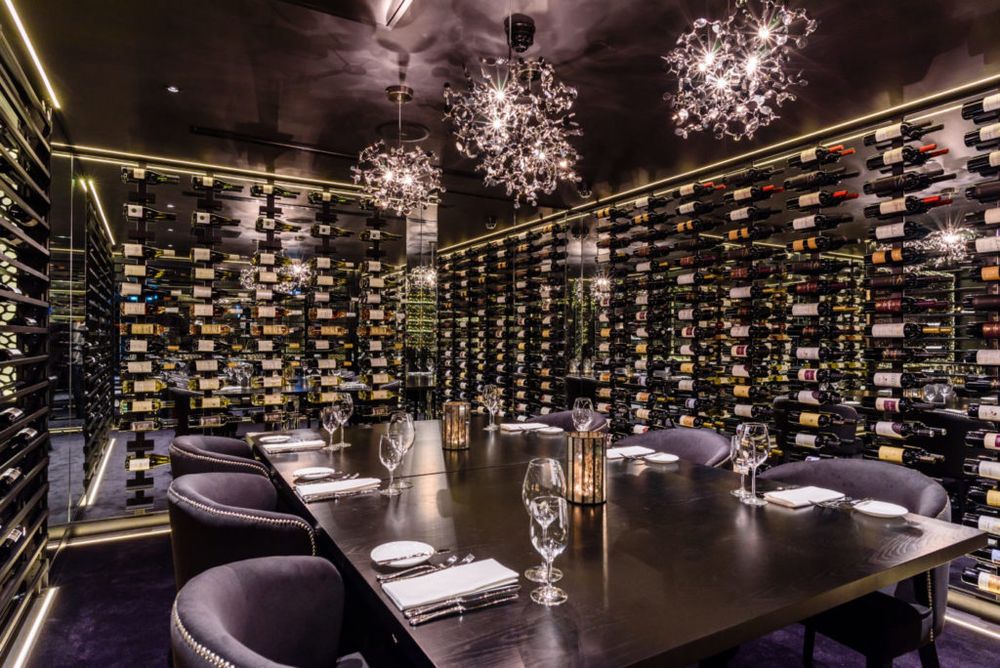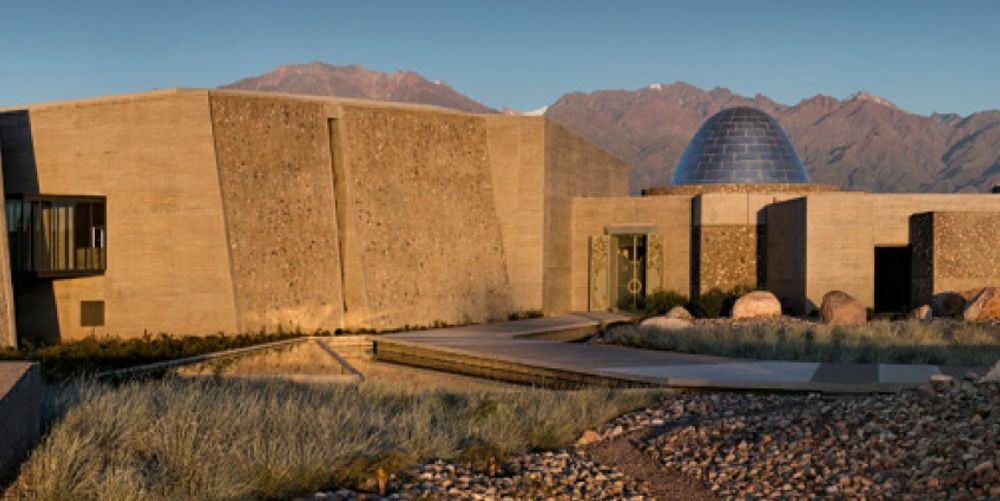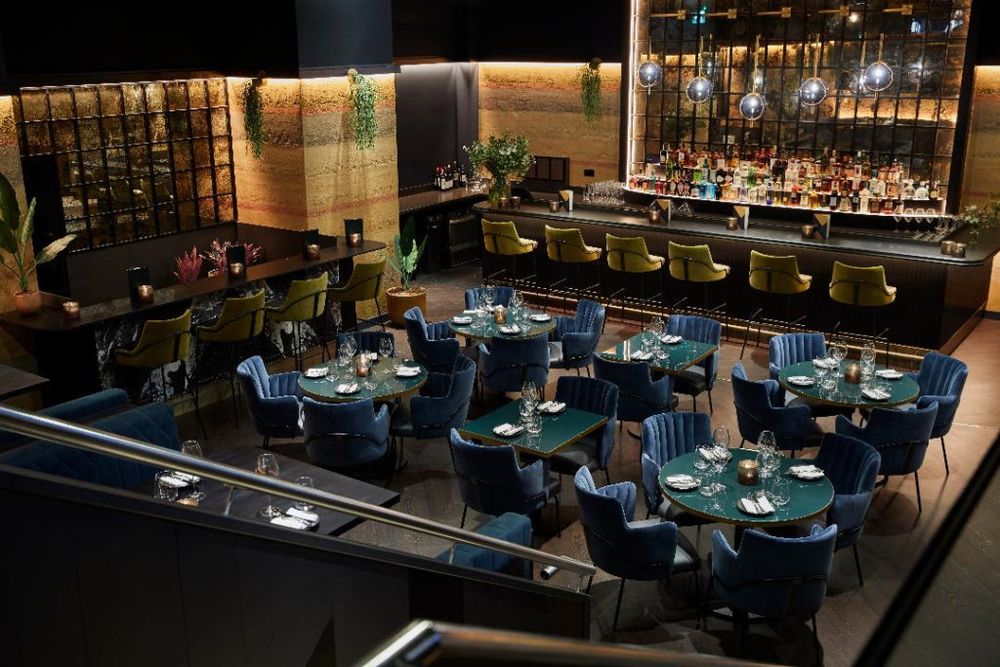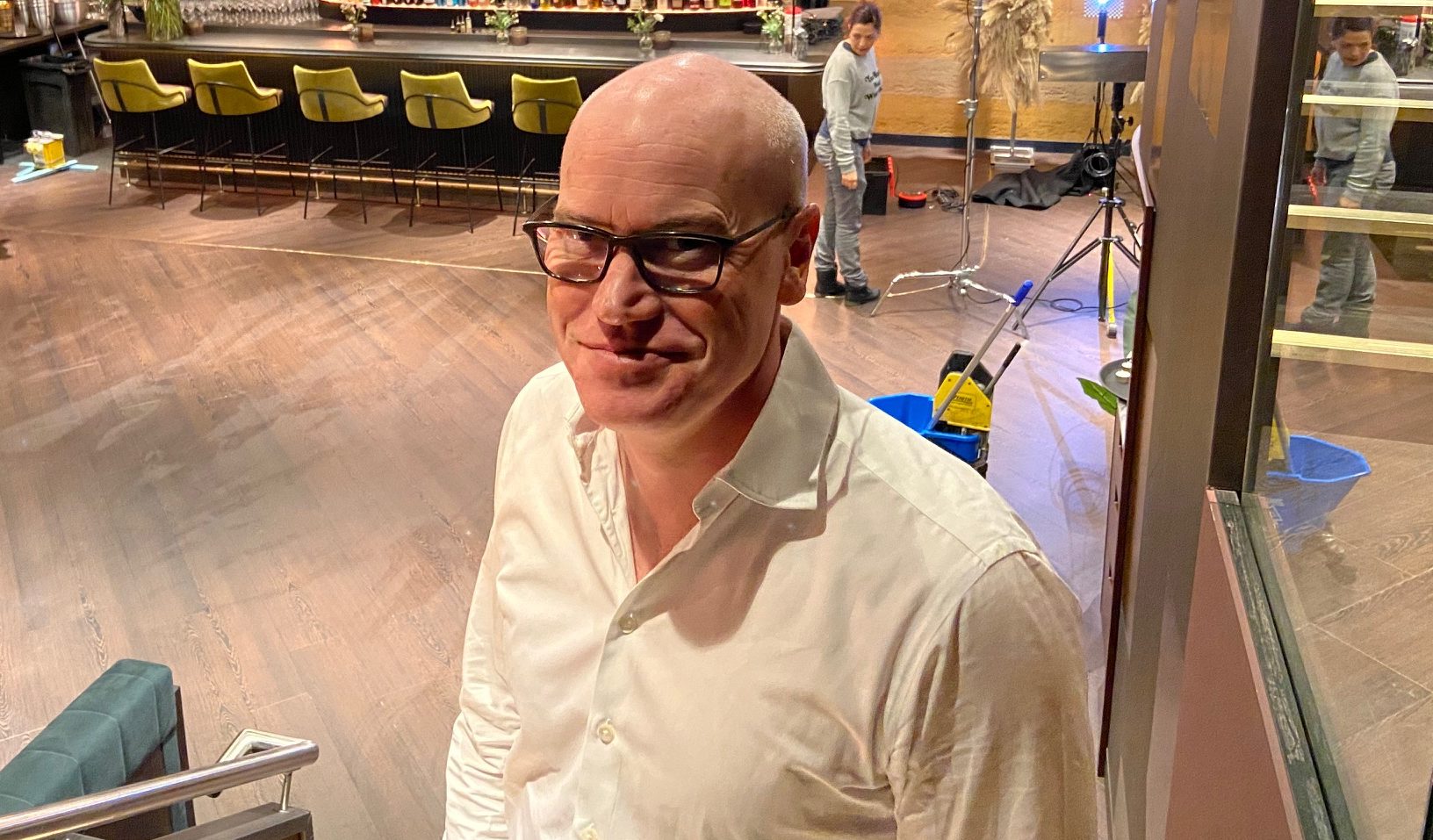Charlotte Street is the first restaurant in the Gaucho group to be re-styled, and re-launched with the new look that chief executive Martin Williams has helped create and wants to roll out across the chain.
When the Gaucho Group fell into administration in July 2018 it looked like the UK’s first premium steak restaurant business would be another footnote in the long list of chains that have made their mark on the UK restaurant industry, but ultimately crashed and burned like so many others.
But there was more going on behind the scenes than the calamitous financial figures would have you believe. Dig behind the headlines and it was not the core Gaucho brand that was the problem, more the ill fated decision to expand its sister chain, Cau, too quickly in the over supplied, and clearly unprofitable mainstream casual dining sector.
When the administrators stepped in they moved quickly to close all Cau outlets with immediate effect, but the Gaucho restaurants were actually found to be trading “well in its market segment,” was “profitable” and “has a strong underlying brand and guest loyalty”.
It was, therefore, not long before new buyers came in with the intention of reviving and re-launching the Gaucho brand and its 13 remaining restaurants. Which is where Martin Williams enters the story.
Return of Williams
Now for seasoned Gaucho followers, Williams was very much part of the management team in the early 2010s who helped take the group to its dizzying heights of success, with restaurants opening up around the world in Buenos Aires, Dubai and Hong Kong.

M Restaurant in Threadneedle Street was the first restaurant where Martin Williams had the opportunity to show his vision for what restaurants can look like
In fact so embedded was Williams with the Gaucho image and strong staff culture that it was a major shock when he suddenly left the business in 2014 to set up his own premium restaurant brand, M Restaurants. Four years later it was Williams who the new owners, Lomo Bidco, formed by its two investors, Investec Bank and SC Lowy, turned to help revive the Gaucho name. Also buying the M Restaurant group at the same time, installing Williams as chief executive of both businesses.
Some 15 months after re-joining Gaucho, Williams is finally ready to reveal the turnaround strategy that he and his investors hope will not just keep Gaucho on the high street, but become an important, viable, long term career opportunity for anyone working in hospitality.
For it’s the staff who Williams has turned to first to help bring the good times back to the group. He says he was genuinely delighted to see that amongst the long standing Gaucho team, morale and commitment to the group was still high. So much so that most of the strong cultural influences that Williams worked so hard to instil during his first stint with the company were still there in some form or another.
“The service at Gaucho had always remained great, even if the offer had become tired and it lacked investment,” says Williams.
Staff morale

Welcome to the new Gaucho…the new fit is designed to represent modern Argentina, so subtle equine references like the lasso-style chandelier and cowboy and cowgirl imagery
It’s also the staff who Williams knows he need to convince the new Gaucho has a strong future, if they are going to play their part in continuing to get more customers through its doors.
A key element of the new strategy is a recruitment commitment to employ at least 10% of Gaucho staff from charities that support individuals who have fallen on hard times, or are locking for a fresh start. It is working with give different groups including The Clink Charity that help ex prisoners back into work, the School of Hard Knocks, that help provide new opportunities for the underprivileged and those from poor family backgrounds and Only a Pavement Away, that works with people who are homeless.
Williams says it’s not just the “right thing to do” but has also helped create a bigger sense of community and purpose amongst all the Gaucho team and part of its commitment to offer long term career opportunities across the combined Gaucho and M Restaurant groups.
“We want to create an environment where everyone feels they can better themselves,” he explains.
Which is why every Gaucho and M staff member has their own career map that tracks their personal and professional development. The group, says Williams, will then invest and help them take on extra training, be it a wine exam, or learning another language, so that it can help them as people as well as staff members.
“We want them to be part of our community. To be proud of where they are working and build a strong career with us.”
The first thing Williams did when taking on the chief executive role was to go around the restaurants and talk to staff about what they wanted from the company. To look at the values that mean the most to its staff.
What was clear was how “resilient” they had been dealing with the issues of the overall group and how that in itself had naturally brought them closer together. The opportunity is there now for the new company to build on that sense of unity and offer them so much more in return, says Williams. “My expectation was that they would all be demotivated. But they weren’t and have really bought into our new ideas.”
New food and wine offer

Williams wants Gaucho to reclaim its position as the best premium steak restaurant in the country and also wants its beef offer to become carbon neutral
But it does not matter how good your staff morale is, if the food and wine you are selling is not up to the standard of the rest of the high street. That’s where Williams is much more critical of the previous management team, accusing them of becoming “lazy” particularly in terms of the wine offer that, he claims, had been whittled back to the bare bones, many of which were available in other restaurants.
A far cry from when Phil Crozier was leading the wine team with the UK’s most ambitious Argentine wine range, and revolutionising wine lists by segmenting it in terms of altitude and soil type.
He now hopes to revive Gaucho’s position as having the most cutting edge and respected Argentine wine range in the market. To do so he is working with Andrew Maidment, former head of Wines of Argentina UK, to help source exciting new wines for its list.
“We want to be the champion again of innovative wines. We want to source producers that are not exporting to the UK and give more opportunities to those that are,” he explains.
The goal is to have an initial list of 26 to 30 wines that are unique to Gaucho, which will then grow to a 100 and more.
It also wants to introduce iconic wines from other countries in order to give its customers a more diverse wine range to choose from. We can expect, therefore, to see more ‘names’ on Gaucho list with both Old and New World Classics, be it a Cheval Blanc or a Stag’s Leap. This will also allow Gaucho to build stronger relationships with a wider selection of distributors and importers, says Williams.

The wine room at Gaucho’s Piccadilly branch was indicative of what was such an ambitious wine strategy for the group that Williams claims had got “lazy” by the time the chain went into administration in 2018
Overall the mix will be 75% from Argentina, and 25% from the rest of the world. Williams ideal size of list would be 200, with 100-120 from Argentina, 25 sparkling, and 50-75 international. It is currently at around 100. “In our hey day we had 250 wines, all from Argentina.”
It is working mainly with Matthew Clark and Bibendum to help source and bring in new wines, but is also open to working with other importers.
The wine range at Gaucho will also be mostly different to what Williams has at M, with some cross over for producers such as Craggy Range.
Change with the times
The fundamental issue with Gaucho as a brand, claims Williams, is that it was still doing what it was doing 10 years ago. “It had not moved on,” he says.
Yes, it wants to become known again as the UK’s most prominent steak restaurant chain, but it needs to be so much more than that, he adds. For one he believes passionately in giving his customers an environmental and sustainable offer as he can. He is, for example, introducing a carbon free beef policy that he wants to see in all its restaurants by the end of 2021, as part of the revamped offer across the group.
He has also turned to bulk wine in a big way to take that sustainable message over to wine. That includes, for now, a minimum choice of six wines by the tap, all sourced via Hatch Mansfield, from premium Argentine producer, Zuccardi, at its newly re-opened Charlotte Street branch in London. Serving wines on tap also means using a lot less glass and huge savings in recycling costs, he adds.

The award winning Zuccardi winery in Mendoza’s Uco Valley is supplying premium wine for Gaucho’s new wine on tap range
Williams says he has not had any complaints, but stresses that’s not really the point. He admits his customers may not be demanding to have more wines served by tap now, but “they most definitely will in the future” and it is vital groups like Gaucho keep one or two paces ahead of them.
Choosing which restaurant you go to by their “social impact” will, he believes, soon become part of his customers’ decision making about where they want to go and eat and drink. Which, for him, means putting more pressure on his suppliers to find him the most carbon-effective solutions. And if that means more premium bulk wine then so be it.
It’s why Williams is also introducing a carbon free steak policy for its restaurants that goes right back to where the cattle are reared and controlling what they eat and how they are treated. He has pledged to make all its beef carbon neutral by the end of 2021.
To do so means working with its farmers to ensure their cattle are treated in the right way, which for Gaucho means sourcing beef from cows that have the equivalent of 20 football fields to graze in. It will look to work with climate change scientists and respected bodies to ensure it is planting trees and taking the necessary steps to have a carbon free supply chain in place over the next two years.
Williams even has the idea of introducing a Sustainable Steak Association and getting other restaurant chains to follow its actions and also work together to help lower their overall carbon rates.
Look and feel

Getting ready for business…the new look Charlotte Street prior to its official opening earlier this month
Then there is the actual look and feel of the restaurants themselves. The traditional Gaucho ‘look’ was very much about the cow hides, and throws that were in vogue long before Game of Thrones came along. The new look and feel, which has first been unveiled at its Charlotte Street branch just off Oxford Road in London, hopes to evoke the modern, contemporary Argentina, where the nods to horses and ranches, are more influenced by polo and fashion and more subtle. “There are a lot of equine references,” says Williams, pointing to a lasso shaped chandelier and stirrups along the bar.
The dark browns and golds used for the wallpaper are meant to symbolise the country’s mountains and also reflect Argentina’s history for producing rich metals.
The new Gaucho will also look to give customers a full steak and eating out experience, with the Charlotte Street outlet, featuring a new beef kitchen where guests can sit and have their own personal masterclass in choosing and cooking a steak, before being given the chance to their own on mini grills.

The restaurant floor also has it own standalone bar allowing customers to move from their table to the bar for a new experience
The main restaurant also has a full sized Western-style bar, complete with a cinema screen that will be used to show classic films and offer guests a steak and cinema experience.
The new Charlotte Street opening very much represents the new look for the Gaucho brand, but Williams stresses only around half of it will be replicated in its other sties. Instead it wants to give each of the restaurants their own distinct personality based on where they are and the type of customers that dine there. A Smithfield Gaucho should look and behave differently to one in South Kensington, says Williams.
Having been through so much turmoil over the last couple of years, Williams and his team are in no mood to rush through the changes. The restaurant makeovers will come up as and when each one is ready for a new fit out and he expects could take three years to complete. Giving the design the time to evolve as well, he adds.

And after the makeover…the new look Charlotte Street Gaucho
Changing perceptions
Gaucho might be back in the news now thanks to the Charlotte Street re-opening, but there has already been a lot of changes going on behind the scenes, stresses Williams.
Including a wider choice of menus that allow for bigger or smaller spends. Like a good value set lunch menu or pre-theatre options. “The difference is like between night and day in terms of what we are now offering,” he says. “Our return rate amongst customers has doubled in the last year.”
It’s clear value for money had become a major issue for the old Gaucho. Increased overheads may have justified some of the price increases, but it went from being an affordable night out to a restaurant you only went to for special occasions – and when you did the quality of food on offer did not always live up to the high prices.
The new cheaper menus have helped get more customers back, says Williams, with a 14% increases in like-for-like covers. Which, he adds, has to be seen in light of an industry average that has seen a 5% decline in bookings. “It’s a great achievement, but there is so much more to do,” he adds.
He is also keen to soften Gaucho’s macho image and make it more appealing to women, with a wider choice of food, and vegan and vegetarian options.
The challenge is to keep raising those standards so that it can truly deliver the holy trinity of “great service, in a great ambience with great quality products,” says Williams. It’s ultimately what all premium dining experiences should be about, he adds.










































